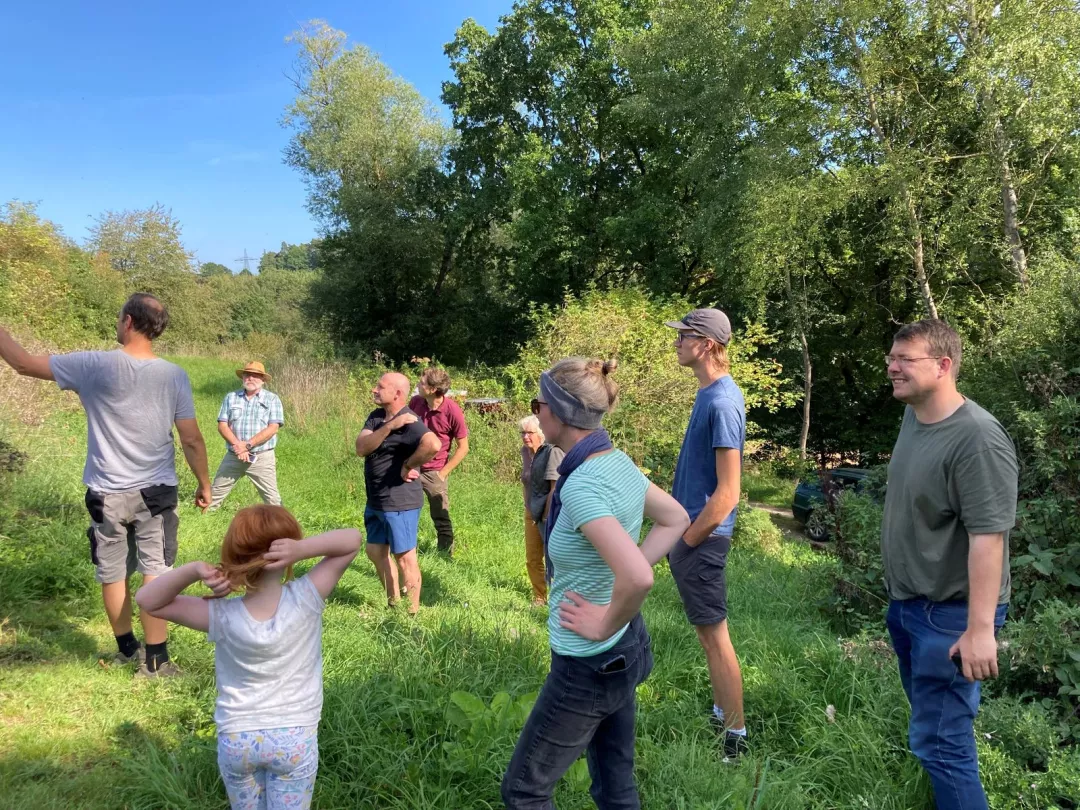Inspirational idea: Sustainable bee forest
Operational Group develops a concept for ‘forests of the future’ that can adapt to the changing climatic and ecological conditions thanks to specifically selected tree species.

Together with Rhineland-Palatinate, Hesse is the most densely forested state in Germany. However, in recent years, Hessian spruce forests have been severely affected by the impacts of climate change such as drought, high winds, storms and bark beetle infestations. Two arable farms which lost a significant amount of forest on their land teamed up with two beekeepers and a bee specialist to find an alternative to re-planting spruce trees. They started the Operational Group ‘Sustainable bee forest’ to develop a concept for ‘forests of the future’ that can adapt to the changing climatic and ecological conditions, thanks to specifically selected tree species with a high ecological value for flower-pollinating insects. The sustainable forest design brings together nature conservation and the protection of bees and other pollinators, as well as forestry and the production of non-timber forest products.
The partners looked for tree species which would allow the forests to be a source of income for the farmers (by producing wood and other non-timber products), as well as providing food for bees and pollinators. Among the species being tested are flowering hardwood species such as robinia, sweet chestnut, lime, and bird cherry. Raspberry bushes are planted between the small trees, providing more flowers for bees. The aim is to provide pollinating insects with an extensive and continuous supply of nectar and pollen, free of pesticide contamination, from early spring to late summer. Walnut trees are also included, which are less interesting for bees, but the nuts are an additional income stream for farmers.
The project started in 2022, and ends in 2025. The first part of the project, now concluded, was to research which combination of trees to use, and to plant them on the two farms. The second part, now underway, is analysing the impact on bees and pollinators. As the trees are still very small, the partners are carrying out tests in other forests in the region where the same tree species are already mature. The beekeepers have taken their bees to these mature forests, and are monitoring changes in the honey. Through laboratory testing of the honey, the partners can also track which species the bees are most drawn to. Economic comparisons between the new tree species and the spruce forests are being carried out by a university.
The design is for a permanent forest system, which plans for long-term income, as well as planning around long-term projected climatic conditions. The wood from most of the tree species selected will not be ready to sell as timber for the next 80 years; it was therefore very important for the project to ensure that the forests can also make money in the shorter term. This is why non-timber products such as honey, nuts and berries are included in the design.
“We wanted to design a forest that provides habitats for honey bees and other pollinating insects with climate-resilient tree species. The increasing biodiversity in the forest ecosystem was also important to us. At the same time, the forest needs to be financially viable for the forest owners, and so another important element of the design was that economy and ecology do not have to be mutually exclusive”, concludes Judith Treis, project coordinator.
Further information and contact:
- Project coordinator: Judith Treis judith.treis@comunis-projektbuero.de
